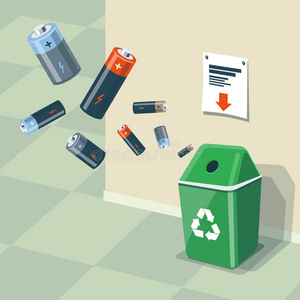
Electronic waste (e-waste) is a pressing issue. Consumer electronics’ growth is great news for businesses, but as new hardware renders the old obsolete, it’s led to a rapidly expanding disposal problem.
Many possible strategies to manage e-waste have emerged over the past few years. One of the most intriguing opportunities is in construction. A single practice could boost sustainability in both the electronics and construction industries.
The problem with e-waste
To grasp the importance of using e-waste in construction, organizations must first recognize the scale of the e-waste problem itself. The world generated 55 million metric tons of e-waste in 2020 and shows no signs of slowing down. By 2030, that figure could exceed 74 million metric tons.
Of course, old electronics reaching the end of their life wouldn’t be as big an issue if people disposed of them safely. However, that doesn't happen often. The world recycles just 17.4% of its e-waste, with the rest going to landfills or incinerators.
That lack of recycling is an issue because electronics are far from biodegradable. Many devices contain materials that are hazardous to the environment if they leech into it. Metals like lithium can release toxins and endanger nearby wildlife as they sit in landfills. Incinerating this waste isn’t much better, as it can release the same harmful chemicals as vapors and result in significant greenhouse gas emissions.
Local regulations haven’t done much to avert these problems, either. The U.S. sends most of its e-waste overseas to China or India, where American authorities can’t enforce safe disposal practices.
E-waste in green concrete
Reusing e-waste in a circular economy poses a promising solution. One particularly beneficial way to do this is to use e-waste as an aggregate in concrete. Aggregates are added materials that give cement more strength and structural stability, and electronic components may make ideal ones.
Common device materials like epoxy resin, fiberglass, copper, and rare earth metals don’t break down easily and have high mechanical strength. The very qualities that make them difficult to recycle and hazardous to place in landfills make them a promising construction resource. Considering concrete accounts for 9% of all human CO2 emissions and is the world’s most-produced material, it’s also ripe for sustainability improvements.
This recycling has economic benefits, too. Materials make up the largest portion of construction budgets, apart from labor. Using e-waste as a concrete aggregate would lower material costs in concrete production, thus leading to lower project expenses for the construction teams using these materials.
How well does it work?
Early experiments with e-waste in concrete show promising results. One 2019 study found that replacing 15% of coarse aggregate with e-waste gives concrete 20.35% more compressive strength and 15.69% higher flexural strength.
A more recent study had similar takeaways for the viability of e-waste as a concrete aggregate. This project replaced up to 5% of conventional additives with fibers made from waste circuit boards. The higher-percentage e-waste concrete had 24.7% higher compressive strength and 70.25% higher tensile strength.
E-waste’s benefits as an aggregate reach a point of diminishing returns at higher percentages. Still, these studies show that recycling e-waste into concrete is not only viable but preferable.
It’s also worth noting that this recycling doesn’t eliminate concrete-related emissions. Much of concrete’s environmental impact comes from the high energy required to make cement workable and combine these materials. However, reducing the need for virgin aggregates while minimizing e-waste is a step in the right direction.
E-waste recycling improves both construction and electronics
